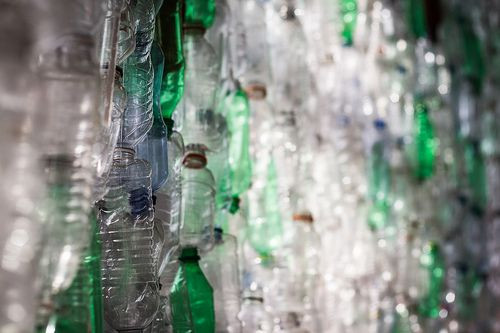Formaldehyde In Food Packaging May Contaminate Your Food, But That Doesn’t Make It Dangerous

If you’re at all uncertain whether you’re following the right diet, take comfort in the fact that not even science knows what “the right diet” looks like. Combine the highly cultish paleo diet — no sugar, no carbs, no cheese — with the philosophies of vegetarianism — no meat or fish — and the hundreds of other diets that tell you (in some form) that all food is bad, and what you’re left with is, effectively, the diet of a rabbit that’s learned to cook tofu.
What people tend to forget in pursuing these diets is that food isn’t the bad guy. From the time the farmer harvests his crops to the time you rub your dirty fingers over each and every apple, food changes hands so fast it’ll make your vision blur. A new report suggests this handling process comes with frequent contamination, as the chemicals found in food packaging slowly leach into the food itself. But like the germy door handle or the heap of dirt you used to play in, this contamination may just be another health risk that’s best met with a shrug.
The new findings, reported by U.S. and UK scientists in the Journal of Epidemiology and Community Health, suggest that formaldehyde and other chemicals are often found in food packaging, and it’s these chemicals that gradually make their way into the products contained within. As the research team sees it, the fact that only 25 percent of these foods have undergone testing should sound the alarms. Putting us at risk are the same products we so often enjoy, such as breakfast cereals, canned soups, crackers, frozen vegetables, and packaged meats.
"Whereas the science for some of these substances is being debated and policy-makers struggle to satisfy the needs of stakeholders, consumers remain exposed to these chemicals daily, mostly unknowingly," the team wrote.
That still leaves a couple questions unanswered. For one, it’s not enough to say chemical exposure is necessarily a bad thing. Formaldehyde, though not used in the plastic bottle-making process, does seep into sodas and water as a byproduct, the team asserts. However, the classic embalming fluid that has been formally recognized as a “known human carcinogen,” also exists naturally in the food we eat each day.
"To consume as much formaldehyde as is present in a 100g apple, you would need to drink at least 20 liters of mineral water that had been stored in PET [polyethylene terephthalate] bottles,” Dr. Ian Musgrave, a medicine faculty members at the University of Adelaide, told The Guardian. “Obviously the concern about formaldehyde from food packaging is significantly overrated, unless we are willing to place 'potential cancer hazard' stickers on fresh fruit and vegetables.”
When your body digests that apple, or other citric fruits and vegetables, it breaks down the methanol and converts them into low levels of formaldehyde. The chemical is so vital to our normal metabolic processes, in fact, that at any given moment a sample of blood will contain roughly 2-3μg of the substance, which is regularly produced as a byproduct of important gene expression processes. The bottom line? The trace amounts of formaldehyde in your water bottle are probably harmless.
There is a darker side, however. It’s true that if you drank a solution that was 37 percent formaldehyde you’d keel over and die. But the hazards of gradual exposure could be the slower contributions chemicals in packing are making toward chronic diseases, such as cancer, diabetes, and infertility. Science doesn’t have a firm footing on these diseases because understanding them demands a long timeline and the isolation of countless variables. For example, how can a scientist know whether your cancer is the result of genetics, your environment, lifestyle factors, or simply how you consume your water?
So for now the arguments against chemical-containing packaging merit attention, and companies have noticed. Major corporations, for instance, have been forced to make transparent their packaging processes to assuage consumer doubt — not exactly altruistic behavior, but socially conscious nonetheless. For all this unknown danger, however, a more pressing argument remains, according to Colin Berry, emeritus professor of pathology at Queen Mary, University of London: Food packaging keeps food fresh.
"No consideration is made in this commentary of likely benefits of the substances used in food packaging,” he told The Guardian. Critics of packaging fail to acknowledge that “they prevent contamination during handling (bacterial and viral), they prevent deliberate tampering (which has been previously documented with over-the-counter medicines and in deliberate introduction of harmful agents into foods), and there is also the simple point that you have to have something on which to print information about the foodstuff inside.”
Source: Muncke J, Peterson Myers J, Scheringer M, Porta M. Food packaging and migration of food contact materials: will epidemiologists rise to the neotoxic challenge? Journal of Epidemiology and Community Health. 2014.
Published by Medicaldaily.com



























